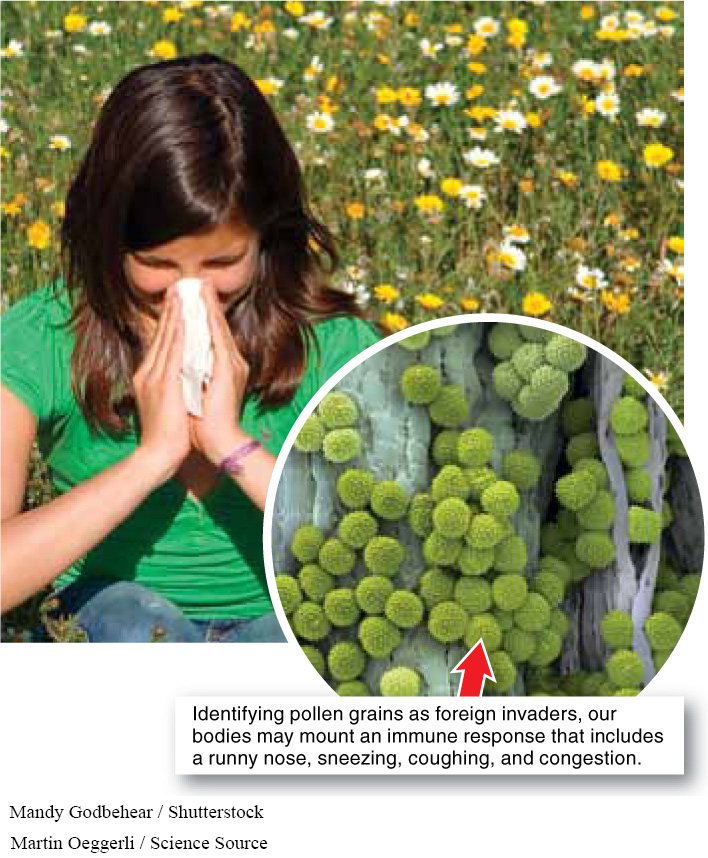Humans have a great love of flowers, but it’s not unconditional. Tens of millions of people suffer sneezing, coughing, and watery eyes from allergies to certain types of pollen.
Is pollen the equivalent of plant sperm?
What exactly causes so many people so much misery? In plants, the haploid cells produced by meiosis are called spores. Spores produced in the anthers of flowers are called microspores, and spores produced in the ovules are called megaspores. As the anther grows, it forms four chambers—



736

Why does pollen cause allergy attacks in so many people? The trouble begins each spring and summer, as plants release billions and billions of tiny pollen grains into the air. Proteins project from the cell wall of every one of these pollen grains, increasing the pollen’s stickiness. Inevitably, we breathe in some pollen grains, and our bodies immediately detect the pollen’s surface proteins and identify them as foreign invaders (FIGURE 18-13). In response to this invasion, our immune system attacks and tries to flush the pollen from our bodies. Mucus on nose hairs helps move the pollen outside the nose (FIGURE 18-14). However, sometimes the response is extreme. The runny nose, sneezing, coughing, and congestion common to pollen allergies are all manifestations of the body’s over-
TAKE-HOME MESSAGE 18.5
The male reproductive structure of flowering plants produces pollen grains, each grain a two-
How are microspores formed from microspore mother cells within a flower's anther?
The diploid microspore mother cell divides by meiosis to form the haploid microspores.
737